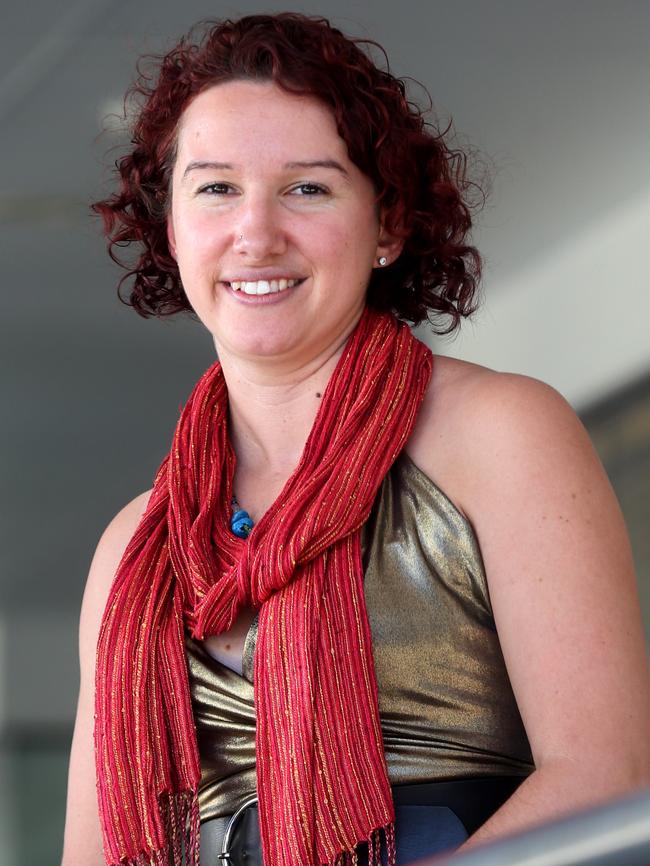Calls grow for urgent fix to private birthing crisis
The shutdown of private birthing units is set to blow the national health budget, with new modelling showing the decline of private births could cost taxpayers an extra $1bn a year.

The shutdown of private birthing units is set to blow the national health budget unless there is an urgent fix, with new economic modelling showing that even on relatively conservative estimates, the decline of private births could cost taxpayers an extra $1bn a year.
The extraordinary figure would wipe out a large chunk of the extra money the commonwealth and states are set to pour into public hospitals in coming years, with many thousands of women left with little option but to rely on public hospital antenatal clinics and to give birth in public labour wards.
Economic analysis of birthing trends by Monash University professor Emily Callander presented at a recent medical forum shows that if a 50 per cent decline in births in the private system were to eventuate – a not unrealistic estimate – then taxpayers would subsidise public system antenatal care and labour ward delivery to the tune of $1bn annually. The costs are amplified because the analysis also revealed that birthing in the more efficient private system, which is partly paid for by private health insurance premiums, costs taxpayers less than if women gave birth in a public hospital.
Eighteen birth units have closed in private hospitals in Australia over the past seven years, about 10 of them in the past three to four years.
“A decline in private births means that there is of course an increase in public births,” Professor Callander told the recent Australian Birth Forum hosted by the National Association of Specialist Obstetricians and Gynaecologists. “This has a very important impact upon the costs to public funders.”
The upcoming analysis, which is pending publication in a major scientific journal, arose from analysis of a large dataset of 350,000 births between 2016 and 2019. The data was rigorously adjusted to account for clinical factors, socio-economic status and other variables so the births could be compared like for like.
Professor Callander, the only economist in the country specialising in women’s and children’s health, has presented high-level results at scientific meetings over the past year from her research with Monash University colleague Professor Helena Teede that indicates birthing is significantly safer for women and babies under the continuous care of obstetricians in private hospitals, and at a cheaper overall cost.


The reason that like births are cheaper in the private system irrespective of consumers footing out-of-pocket costs and insurers subsidising care is likely that care is more efficient in the private system with greater continuity, and that intervention is planned and more commonly avoids adverse outcomes. It also seems that public hospitals are much less likely to count costs when it comes to birth whereas private hospitals are under financial pressures and control costs well.
Importantly, the cost of managing complications such as massive haemorrhages or baby resuscitation is greater in public hospitals because these complications are much more common. Litigation relating to catastrophic events is on the rise against public hospitals.
Professor Callander said if the nation were to see a 10 per cent total decline in private birthing units, the net cost impact would result in public hospital funders tipping in an extra $189m per year. If there were a 30 per cent decline, taxpayers would foot a $380m bill. If there were a 50 per cent decline, public hospital costs would soar to just shy of a $1bn increase per year, increasing to $1.5bn if private birthing became extinct in Australia.
That was exactly the prediction delivered in a paper published in the Medical Journal of Australia last year that examined Australia’s declining fertility rates and public and private birthing trends. The paper posited that private birthing would be extinct in Australia by 2030.
The Australian’s medical columnist, Stephen Robson, an obstetrician and professor of medicine at ANU, undertook the economic analysis. A co-author of that paper, Catholic Healthcare Australia director of health policy Katharine Bassett, said the Callander research bolstered the case for an urgent fix to Australia’s declining private birthrates and escalating private birth unit shutdowns. CHA is in a unique position to comment as it runs both private and public hospitals.


“This latest research shows the collapse of private maternity services isn’t just a crisis for families – it’s a major blow to taxpayers,” Dr Bassett said. “Public hospitals, which are already stretched beyond capacity, simply do not have the capacity to take on this additional burden.
“Private hospitals deliver high-quality, efficient maternity care and give women real choice, but right now they’re being asked to deliver that care at a loss. CHA is calling for a national private price to ensure insurer funding reflects the true cost of delivering safe, sustainable maternity services.
“Every private birthing unit that closes isn’t just a loss for one community – it triggers a ripple effect across the entire health system, increasing pressure on public hospitals and driving up costs for everyone.”
Dr Nisha Khot, president of the Royal Australia and New Zealand College of Obstetricians and Gynaecologists, at the weekend described private birth units shutdowns as “the canary in the coalmine” for what might lie ahead as pressures on public hospitals increase.
Former health minister Greg Hunt, now an honorary Melbourne enterprise professor at the University of Melbourne, has put forward a five-point plan to address the crisis, including national laws on maternity and birth, changes to the private health insurance tier system and risk equalisation pool.
Private Healthcare Australia CEO Rachel David said insurers were also extremely concerned about the viability of private maternity services, and were working with the commonwealth on policy ideas to address the crisis. PHA is pointing to scope of practice changes in a recent commonwealth review and wants obstetricians, midwives and GPs to lead shared care maternity models in the private hospital system.
“The current decline of private maternity care is driven by a range of factors including out-of-pocket fees to see an obstetrician during pregnancy, which is a cost health funds are not legally permitted to cover,” Dr David said. “Chronic workforce shortages across the country, the cost-of-living crisis and the declining fertility rate are also adding to the burden.
“Health funds are also concerned about the high cost of gold health insurance to access maternity care. Gold cover is becoming too expensive for some people, including younger people wanting to start a family.
“We want more flexibility than the current tiering system allows, so we can tailor products to people wanting maternity cover without other expensive inclusions typically used by older people.
“Confining the most expensive medical treatments to the gold tier attracts people who know they are going to claim. This creates a high-risk pool where the cost of care compounds and rises quickly. This is often unsustainable for health funds.
“We look forward to working with health professionals, hospitals and governments to discuss this proposal and refine it, so we can find a way forward.”
Natasha Robinson and Steve Robson have declared a personal relationship.




To join the conversation, please log in. Don't have an account? Register
Join the conversation, you are commenting as Logout